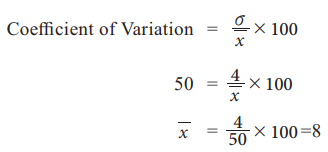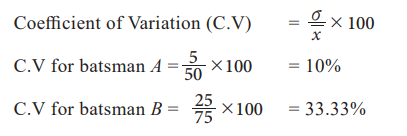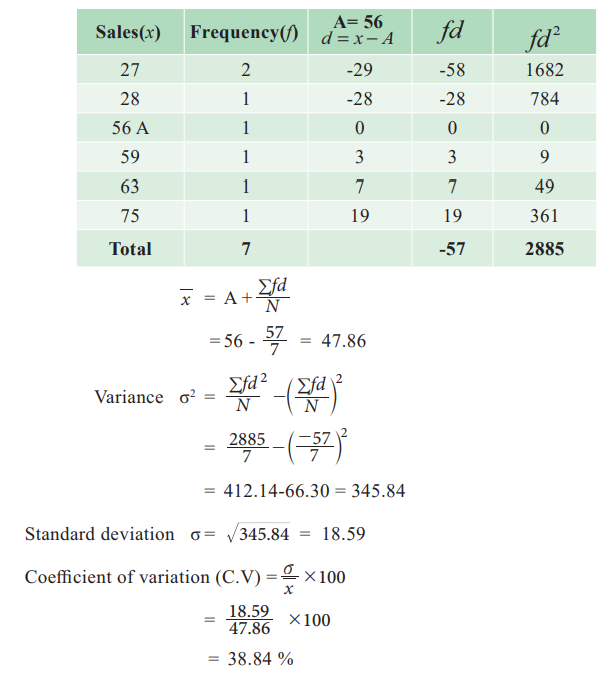Formula, Merits, Limitations, Solved Example Problems - Relative Measures | 11th Statistics : Chapter 6 : Measures of Dispersion
Chapter: 11th Statistics : Chapter 6 : Measures of Dispersion
Relative Measures
Relative
Measures
It is a pure number independent of the units of measurements.
This measure is useful especially when the data sets are measured in different
units of measurement.
For example, suppose a nutritionist would like to compare the
obesity of school children in India and England. He collects data from some of
the schools in these two countries. The weight is normally measured in
kilograms in India and in pounds in England. It will be meaningless, if we
compare the obesity of students using absolute measures. So it is sensible to
compare them in relative measures.
Coefficient of Variation
The
standard deviation is an absolute measure of dispersion. It is expressed in
terms of units in which the original
figures are collected and stated. The standard deviation of heights of students
cannot be compared with the standard deviation of weights of students, as both
are expressed in different units, ie., heights in centimeter and weights in kilograms.
Therefore the standard deviation must be converted into a relative measure of dispersion
for the purpose of comparison. The relative measure is known as the coefficient
of variation.

If we want to compare the variability of two or more series, we
can use C.V. The series or groups of data for which the C.V is greater indicate
that the group is more variable, less stable, less uniform, less consistent or
less homogeneous. If the C.V is less, it indicates that the group is less
variable, more stable, more uniform, more consistent or more homogeneous.
Merits:
The CV is independent of the unit in which the measurement has been
taken, but standard deviation depends on units of measurement. Hence one should
use the coefficient of variation instead of the standard deviation.
Limitations:
If the value of mean approaches 0, the coefficient of variation
approaches infinity. So the minute changes in the mean will make major changes.
Example 6.12
If
the coefficient of variation is 50 per cent and a standard deviation is 4, find
the mean.
Solution:

Example 6.13
The scores of two batsmen, A and B, in ten innings during a
certain season, are as under:
Mean score = 50; Standard deviation = 5
Mean score = 75; Standard deviation = 25
Find which of the batsmen is more consistent in scoring.
Solution:

The batsman with the smaller C.V is more consistent.
Since for Cricketer A, the C.V is smaller, he is more consistent
than B.
Example 6.14
The weekly sales of two products A and B were recorded as given
below

Find out which of the two shows greater fluctuations in sales.
Solution:
For comparing the fluctuations in sales of two products, we will
prefer to calculate coefficient of variation for both the products.
Product A: Let A=56 be the
assumed mean of sales for product A.

Product B:

Since the coefficient of variation for product A is more than
that of product B,
Therefore the fluctuation in sales of product A is higher than
product B.
Related Topics